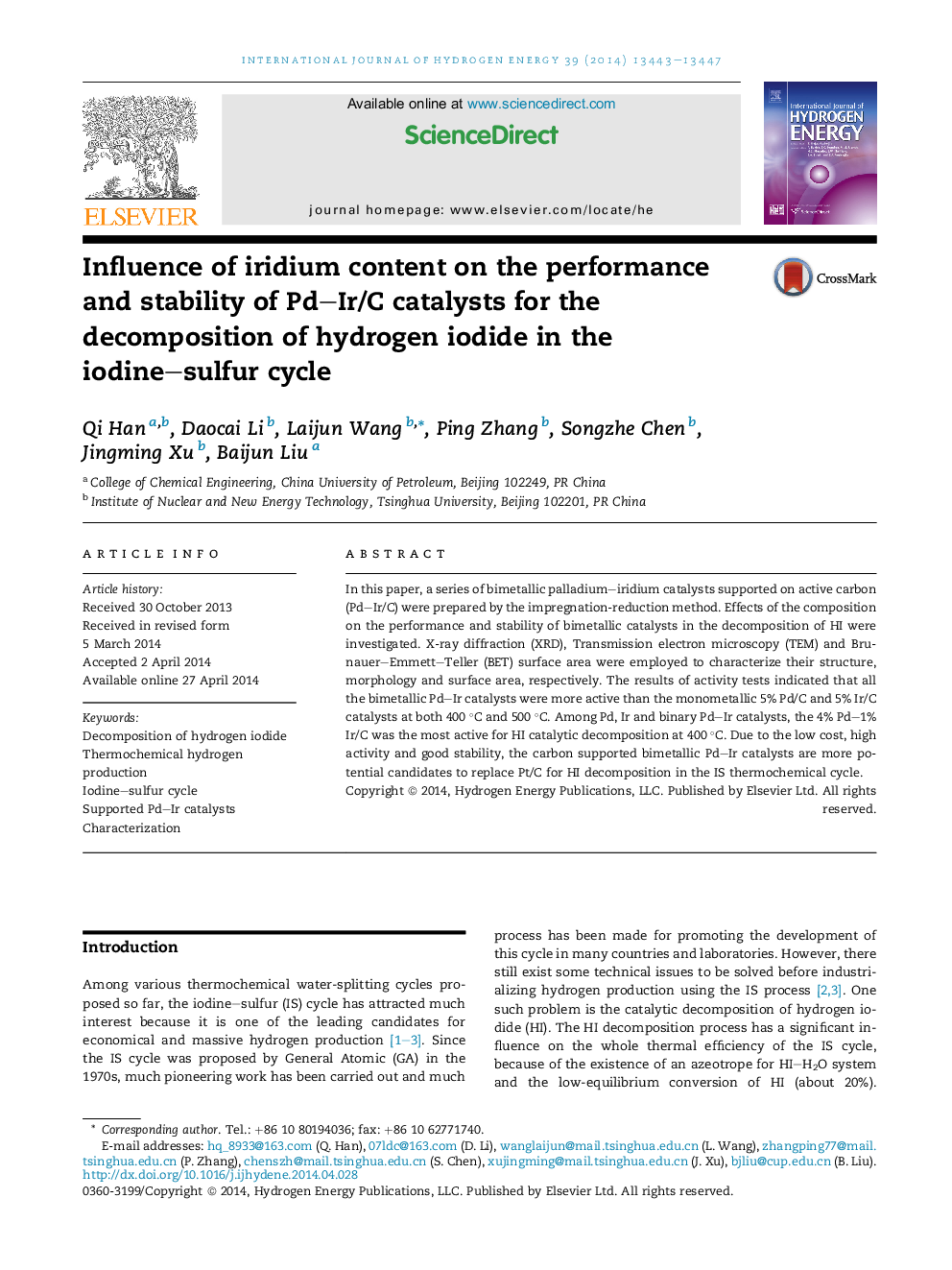| Article ID | Journal | Published Year | Pages | File Type |
|---|---|---|---|---|
| 1272637 | International Journal of Hydrogen Energy | 2014 | 5 Pages |
•A series of Pd–Ir/C, Pd/C and Ir/C catalysts were prepared.•Their differences in structure, surface area and morphology were investigated.•Their catalytic activities were compared for HI decomposition.•The bimetallic Pd–Ir/C catalysts are more active than Pd/C or Ir/C catalyst.•The Pd–Ir catalysts have better thermal stability than the Pd or Ir catalyst.
In this paper, a series of bimetallic palladium–iridium catalysts supported on active carbon (Pd–Ir/C) were prepared by the impregnation-reduction method. Effects of the composition on the performance and stability of bimetallic catalysts in the decomposition of HI were investigated. X-ray diffraction (XRD), Transmission electron microscopy (TEM) and Brunauer–Emmett–Teller (BET) surface area were employed to characterize their structure, morphology and surface area, respectively. The results of activity tests indicated that all the bimetallic Pd–Ir catalysts were more active than the monometallic 5% Pd/C and 5% Ir/C catalysts at both 400 °C and 500 °C. Among Pd, Ir and binary Pd–Ir catalysts, the 4% Pd–1% Ir/C was the most active for HI catalytic decomposition at 400 °C. Due to the low cost, high activity and good stability, the carbon supported bimetallic Pd–Ir catalysts are more potential candidates to replace Pt/C for HI decomposition in the IS thermochemical cycle.
